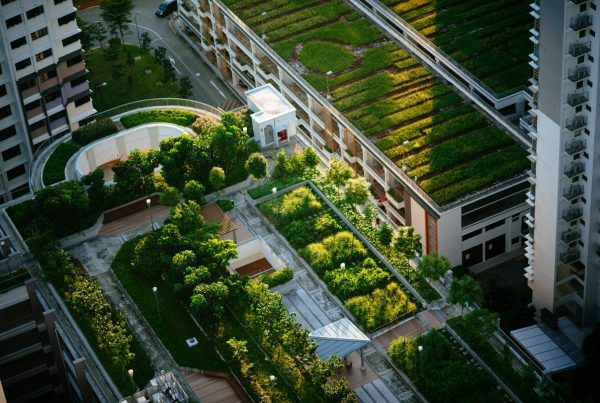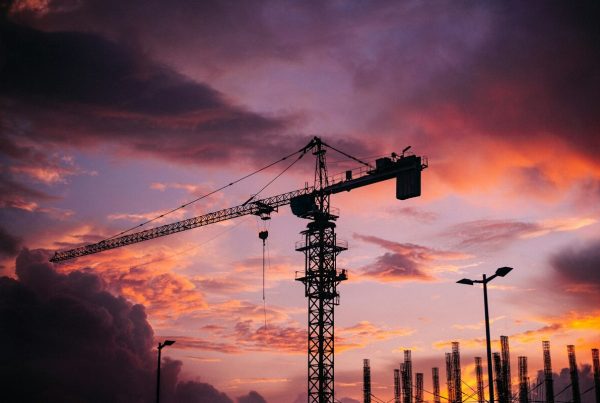As climate change intensifies, developing infrastructure that withstands environmental challenges becomes increasingly critical. Climate-resilient infrastructure endures extreme weather events and adapts to evolving weather patterns, ensuring safety, functionality and sustainability.
Integrating innovative technologies, sustainable materials and nature-based solutions can help the global engineering and construction sectors create systems that endure and thrive in the face of environmental adversity.
Key Principles of Climate-Resilient Infrastructure
Designing infrastructure that can endure and adapt to climate challenges requires a strategic approach rooted in sustainability, innovation and inclusivity.
Focusing on principles that enhance durability and adaptability allows communities to reduce vulnerabilities and build systems that thrive under environmental stress. Below are the foundational principles guiding climate-resilient infrastructure development.
Adaptation Strategies
Adaptation involves designing systems and adopting measures that adjust to environmental changes. This can include constructing elevated buildings to mitigate flood risks, using heat-resistant materials in warmer climates, and developing flexible infrastructure that can expand or contract with temperature fluctuations.
For instance, in regions with high temperatures or direct sunlight, choosing UV-resistant or heat-reflective paints can significantly improve the durability of paint surfaces. Oil-based paints, in particular, are susceptible to sunlight exposure and prone to peeling and degradation. Given their vulnerability, it’s best to avoid using them in sunny climates.
Nature-Based Solutions
Natural systems such as wetlands, mangroves and urban green spaces provide buffers against climate impacts. For example, mangroves protect coastal areas from storm surges, while wetlands reduce flood risks by absorbing excess water.
Community Engagement in Infrastructure
Engaging local communities ensures that infrastructure aligns with their needs and leverages local knowledge. For instance, incorporating indigenous construction techniques has proven effective in creating sustainable, climate-resilient housing.
Sustainable Technologies
Sustainable technologies often involve innovative systems that reduce environmental impact and enhance resource efficiency.
One such technology is the greywater system, which recycles water from sinks, showers and washing machines, repurposing it for irrigation or flushing toilets. This system helps ease pressure on local water systems and maintains sustainable water use to counter drought in regions facing scarcity.
Integrated Infrastructure Planning
Coordinating across sectors — such as energy, transportation and water — helps create cohesive systems that are more resilient to disruptions. Integrated planning considers the interdependence of these systems, reducing the risk of cascading failures during extreme events.
Smart Technologies for Climate Resilience
Digital tools like sensors, AI-driven analytics and real-time monitoring systems can enhance infrastructure resilience. For example, predictive maintenance powered by AI helps detect potential failures in bridges or roads before they occur, saving time and resources.
Global Lessons in Enhancing Infrastructure Resilience
Examining international case studies provides helpful insights into effective strategies for building climate-resilient infrastructure.
Sponge Cities in China
China’s “sponge city” initiative exemplifies nature-based solutions by enhancing urban areas’ capacity to absorb and reuse rainwater. Sponge cities implemented permeable pavements, green roofs and rain gardens to manage stormwater effectively. This approach reduces flood risks and addresses water scarcity by replenishing groundwater supplies.
Cool Roofs in the United States
In response to rising temperatures, U.S. cities like Houston and New York have adopted cool roof technologies that reflect more sunlight and absorb less heat. These roofs mitigate urban heat islands, improve indoor comfort and lower energy consumption for cooling, making them a cost-effective adaptation strategy.
The Netherlands’ Delta Works
The Delta Works in the Netherlands is one of the most advanced flood management systems globally. This network of dams, levees and storm surge barriers is designed to protect low-lying regions from rising sea levels and exemplifies integrated infrastructure planning. The project’s success demonstrates the importance of combining engineering expertise with long-term vision.
Flood-Resistant Housing in Pakistan
Architect Yasmeen Lari has developed affordable, flood-resistant housing in Pakistan using bamboo and other sustainable materials. These elevated structures avoid floodwaters and incorporate design elements that enhance durability and community acceptance.
Cyclone Shelters in Bangladesh
Bangladesh has built multipurpose cyclone shelters that double as schools and community centers. These structures save lives during extreme weather events and foster community engagement in climate resilience efforts.
Challenges in Implementing Resilient Systems
Despite the benefits, several challenges hinder the widespread adoption of climate-resilient infrastructure:
- Financial constraints: High upfront costs deter investment, particularly in low-income regions. Securing innovative funding mechanisms — such as public-private partnerships — is essential to overcome this barrier.
- Policy and regulatory hurdles: Inconsistent or inadequate policies can impede progress. Governments must establish clear regulations and incentives to promote resilient designs.
- Technical limitations: In regions lacking technical expertise or access to advanced technologies, implementing resilient systems becomes a significant challenge.
- Community resistance: Without proper engagement, communities may resist changes due to a lack of understanding or perceived disruptions. Effective communication and education can address these concerns.
Climate Resilience in Urban Planning and Development
Integrating climate resilience into urban planning is essential for sustainable development. Home to over half the global population, urban areas are particularly vulnerable to climate impacts. Key strategies include:
- Zoning regulations: Enforcing zoning laws that prevent construction in high-risk areas, such as floodplains or earthquake-prone zones.
- Infrastructure upgrades: Retrofitting existing systems to withstand climate impacts, such as reinforcing bridges and enhancing drainage systems.
- Incorporating green spaces: Parks, urban forests and green corridors manage stormwater, reduce urban heat islands and enhance air quality.
Embedding these strategies into urban development plans can help cities create livable environments that thrive despite climate challenges.
Safeguarding the Future Through Climate-Resilient Infrastructure
Building climate-resilient infrastructure is no longer optional — it is an urgent necessity in the face of escalating climate challenges. By adopting adaptation strategies, leveraging nature-based solutions, engaging communities and utilizing smart technologies, societies can create infrastructure that withstands and adapts to environmental stresses.
Global case studies, from China’s sponge cities to the Netherlands’ Delta Works, provide invaluable lessons for improving local infrastructure resilience. However, overcoming challenges like financial constraints, policy gaps and community resistance is crucial for widespread adoption.
Integrating climate resilience into planning and development will ensure sustainable, safe and functional living spaces for future generations as urban areas grow. Taking action today will help safeguard tomorrow.











